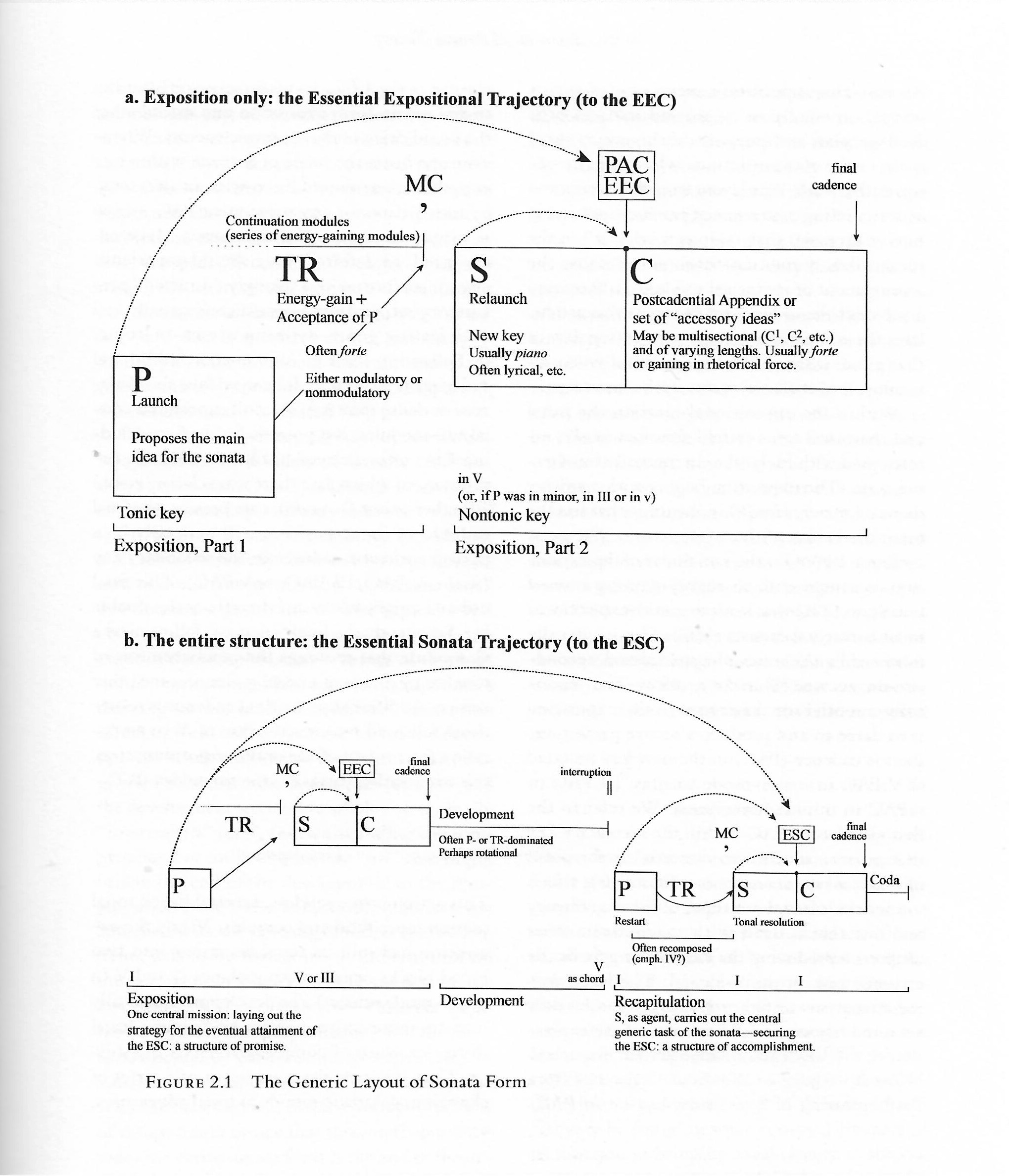The lterature on music theory about sonata forms around 1800 was enriched in 2006 with the work of James Hepokoski en Warren Darcy:
Hepokoski J. A. & Darcy W. (2006). Elements of sonata theory : norms types and deformations in the late-eighteenth-century sonata. Oxford University Press.
In 2020 Hepokoski published another book (paying attention also to the music of Schubert and Brahms):
Hepokoski, J . (2020). A sonata theory handbook. Oxford University Press.
In Elements the current literature on sonata form is discussed. The work of people like Tovey, Rosen, Kerman, Ratner, LaRue, Schoenberg, Réti, Ratz en Caplin is discussed.
H & D present 5 sonata form types, that differ with regard to their musical goal(s).
Type nr. 3 is the most well-known with an exposition, a development and a recapitulation.
The type are the most similar with regard to the exposition, what happens after that is where they differ most.
Some quotes for clarification:
Dialogic Form
Sonata Theory's core concept is that of dialogic form. This means that each sonata movement that we encounter (most likely a piece from the post-1750 past that has persisted as a part of the standard performing repertory) can be grasped as having been set by the composer into a dialogue with contextually relevant, normative expactations of a once-in-place, taken-for-granted genre.
"... when we attend to any of a genre's exemplars as a singularity - that particular detective story; that particular chess game - our interest can shift to the aesthetic. Each invites us to become attentive to the sway of that specific realization: the expertise of its "madeness" or poesis."
... any individual work is shot through with two aspects: the expectations of its genre and the internal realization if that genre as an aestheic or presentational singularity, a quality of individual craft or expertise.
The familiar form sections exposition, development, recapitulation are viewed as action zones or action spaces.
Trajectories toward generically normative cadences (cadential spans)
At the heart of Sonata Theory is the recognition and interpretation of expressive/dramatic trajectories toward generically obligatory cadences.
... any sonata form consists of a succession of cadential spans, and the various action zones of a sonata are traversed through in order to attain and articulate their appropriate cadences before proceeding to the next zone.
In a nutshell: Sonata form consists of Successive Action Zones within a musically narrative journey.
The schema below (type 3) gives their view on what they call the "generic layout of sonata form":

- P: primary-theme zone
- TR: transition zione
- MC: medial caesura
- S: secondary theme-zone
- EEC: essential expositional closure
- ESC: essential structural closure
- C: closing zone
- PAC: perfect authentic cadence (Caplin)
In addition to Heposki/Darcy:
Example of Form-functional theory:
Caplin W. E. (2001). Classical form : a theory of formal functions for the instrumental music of haydn mozart and beethoven. Oxford Univ. Press.
Caplin W. E. (2013). Analyzing classical form : an approach for the classroom. Oxford University Press.
Example of Schema theory:
Gjerdingen R. O. (2020). Music in the galant style. Oxford University Press.
Example of Process theory
Schmalfeldt J. (2011). In the process of becoming : analytic and philosophical perspectives on form in early nineteenth-century music. Oxford University Press.



